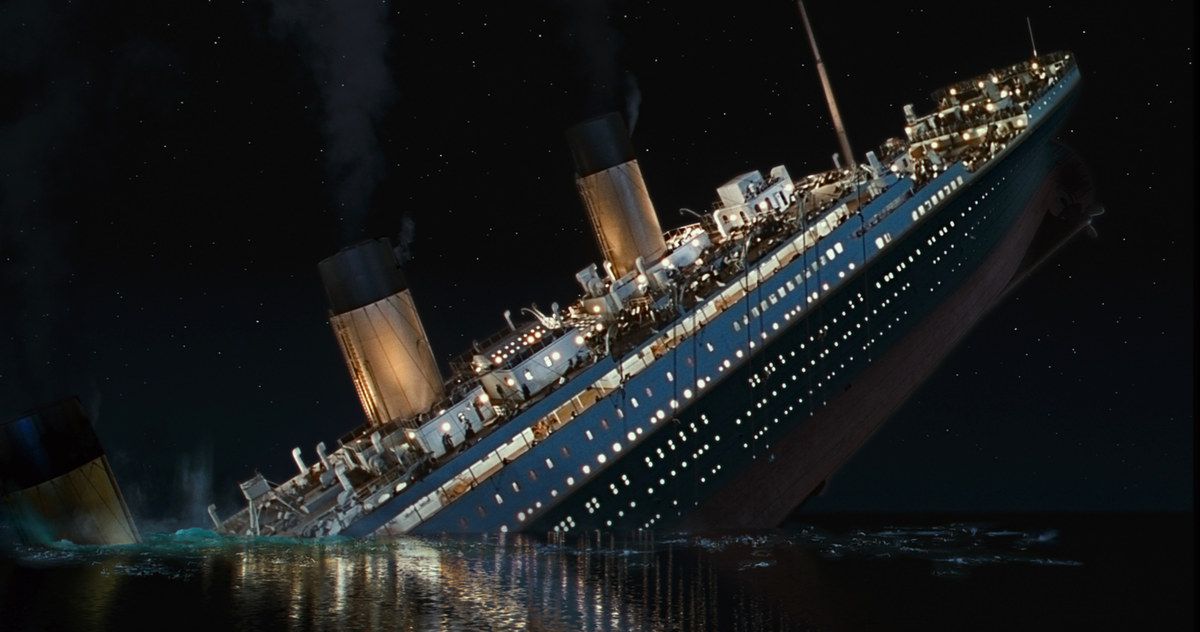The sinking of the RMS Titanic has been the subject of countless investigations, and the true cause of the tragedy is hotly debated. Now, explosive new photographs have surfaced containing shocking revelations about a series of shortcomings which contributed to the legendary ship's tragic sinking. The images are unveiled in a new one-hour documentary on the Smithsonian Channel that tells the story of the unluckiest ship in maritime history. Titanic: The New Evidence premieres Saturday, January 21 at 8 p.m. ET/PT on the Smithsonian Channel, with the journalist who has spent three decades investigating this tragic ship's fate, revealing new details.
The film features newly released photographs from the private collection of the Titanic's Chief Electrical Engineer, John Kempster. They had been stashed away in an attic for over 100 years. The photos show the momentous launch of the famous ship and hold hidden clues to the impending catastrophe. In Titanic: The New Evidence, new visuals bring to life the Titanic disaster as never before. The documentary first debuted on New Year's Day on Channel 4 in the U.K., before its stateside debut later this month. The New York Times got to see this documentary early, which reveals that journalist Senan Molony, who spent three decades investigating the Titanic, claims the crash was first caused by a coal fire that happened before the ship ever set sail. Here's what Senan Molony had to say in the documentary.
"It's a perfect storm of extraordinary factors coming together: fire, ice and criminal negligence. The fire was known about, but it was played down. She should never have been put to sea."
Evidence of the ship's failings revealed in the photographs and featured in the film include use of a range of substandard materials and shoddy workmanship primarily due to cost-cutting and dangerous shortcuts taken by shipbuilders under intense pressure to complete the largest ship in the world on time and within budget. The ship's inadequacies exposed in the photographs include a fire-damaged hull, which is perhaps the most shocking revelation. Two critical photos that show a thirty-foot long black streak on the Titanic's hull. It is evidence that a fire below decks in a coal bunker caused serious damage that weakened the ship's hull in the same area where the iceberg later struck the ship.
The photos also reveal that the ship had a single-skin hull. Double skin hulls had been a feature of ships since the 1850s, but there was intense pressure from Harland and Wolff, the Irish company that built the Titanic, to complete the largest ship in the world on time and within budget and photographic and documentary evidence shows that they did not use the best quality steel in the Titanic. Another new photo shows the Titanic and her sister ship the Olympic side by side in the building yard, revealing how these two enormous ships were being built simultaneously, leading to a huge drain on materials and availability of experienced workers.
Using a newly-devised CG technique to animate the extraordinary original stills, along with a new colorizing technique, the documentary brings viewers into the world of the Titanic's construction, diving into and around the bustling environment in an authentic experience of the shipyard. The photographic evidence was discovered at an auction house by Titanic expert Steve Raffield and investigated by journalist Senan Molony. Titanic: The New Evidence is a Blink Entertainment Distribution/What Icebergs Productions Inc. production in association with Smithsonian Channel, Channel 4 Television, Discovery Canada, France 5 and SBS. The executive producer for Blink Films is Dan Chambers. Charles Poe and David Royle serve as executive producers for Smithsonian Channel.

